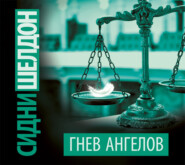По всем вопросам обращайтесь на: info@litportal.ru
(©) 2003-2024.
✖
The Doomsday Conspiracy
Автор
Год написания книги
2018
Настройки чтения
Размер шрифта
Высота строк
Поля
“Yes.” The doctor hesitated. “We believe these creatures are a form of vegetable life.”
“A thinking vegetable? Are you serious?”
“Watch this.” The doctor picked up a watering can and sprinkled water over the arm of the alien with a missing hand. For a moment, nothing happened. And then suddenly, at the end of the arm, green matter oozed out and slowly began to form a hand.
The two men stared, shocked. “Jesus! Are these things dead or not?”
“That's an interesting question. These two figures are not alive, in the human sense, but neither do they fit our definition of death. I would say they're dormant.”
Janus was still staring at the newly formed hand.
“Many plants show various forms of intelligence.”
“Intelligence?”
“Oh, yes. There are plants that disguise themselves, protect themselves. At this moment, we're doing some amazing experiments on plant life.”
Janus said, “I would like to see those experiments.”
“Certainly. I'll be happy to arrange it.”
The huge greenhouse laboratory was in a complex of government buildings thirty miles outside of Washington, D.C. Hanging on the wall was an inscription that read:
The maples and ferns are still uncorrupt,
Yet, no doubt, when they come to consciousness,
They too, will curse and swear.
—Ralph Waldo Emerson
Nature, 1836
Professor Rachman, who was in charge of the complex, was an earnest gnome of a man, filled with enthusiasm for his profession. “It was Charles Darwin who was the first to perceive the ability of plants to think. Luther Burbank followed up by communicating with them.”
“You really believe that is possible?”
“We know it is. George Washington Carver communed with plants, and they gave him hundreds of new products. Carver said, ‘When I touch a flower, I am touching Infinity. Flowers existed long before there were human beings on this earth, and they will continue to exist for millions of years after. Through the flower, I talk to Infinity …’”
Janus looked around the enormous greenhouse they were standing in. It was filled with plants and exotic flowers that rainbowed the room. The mixture of perfumes was overpowering.
“Everything in this room is alive,” Professor Rachman said. “These plants can feel love, hate, pain, excitement … just as animals do. Sir Jagadis Chandra Bose proved that they respond to a tone of voice.”
“How does one prove something like that?” Janus asked.
“I will be happy to demonstrate.” Rachman walked over to a table covered with plants. Beside the table was a polygraph machine. Rachman lifted one of the electrodes and attached it to a plant. The needle on the dial of the polygraph was at rest. “Watch,” he said.
He leaned closer to the plant and whispered, “I think you are very beautiful. You are more beautiful than all the other plants here …”
Janus watched the needle move ever so slightly.
Suddenly, Professor Rachman screamed at the plant, “You are ugly! You are going to die! Do you hear me? You are going to die!”
The needle began to quiver, then it moved sharply upward.
“My God,” Janus said. “I can't believe it.”
“What you see,” Rachman said, “is the equivalent of a human being screaming. National magazines have published articles about these experiments. One of the most interesting was a blind experiment conducted by six students. One of them, unknown to the others, was chosen to walk into a room with two plants, one of them wired to a polygraph. He completely destroyed the other plant. Later, one by one, the students were sent into the room to pass by the plants. When the innocent students walked in, the polygraph registered nothing. But the moment the guilty one appeared, the needle on the polygraph shot up.”
“That's incredible.”
“But true. We've also learned that plants respond to different kinds of music.”
“Different kinds?”
“Yes. They did an experiment at Temple Buell College in Denver where healthy flowers were put in three separate glass cases. Acid rock was piped into one, soft East Indian sitar music was piped into the second, and the third had no music. A CBS camera crew recorded the experiment using time-lapse photography. At the end of two weeks, the flowers exposed to the rock music were dead, the group with no music was growing normally, and the ones that heard the sitar music had turned into beautiful blooms, with flowers and stems reaching toward the source of the sound. Walter Cronkite ran the film on his news show. If you wish to check it, it was on October 26, 1970.”
“Are you saying plants have an intelligence?”
“They breathe, and eat, and reproduce. They can feel pain, and they can utilize defenses against their enemies. For example, terpenes are used by certain plants to poison the soil around them and to discourage competitors. Other plants exude alkaloids to make them unpalatable to insects. We've proved that plants communicate with one another by pheromones.”
“Yes. I've heard of that,” Janus said.
“Some plants are meat eaters. The venus flytrap, for example. Certain orchids look and smell like female bees, to decoy male bees. Others resemble female wasps to attract the males to visit them and pick up pollen. Another type of orchid has an aroma like rotting meat to coax carrion flies in the neighborhood to come to them.”
Janus was listening to every word.
“The pink lady's-slipper has a hinged upper lip that closes when a bee lands, and traps it. The only escape is through a narrow passageway out the rear, and as the bee fights its way to freedom, it picks up a cap of pollen. There are five thousand flowering plants that grow in the Northeast, and each species has its own characteristics. There is no doubt about it. It's been proven over and over that living plants have an intelligence.”
Janus was thinking: And the missing alien is at large somewhere.
Chapter Eleven (#ulink_d6d30c4d-dd6b-50d9-b3fa-338def4173bd)
DAY THREE
Bern, Switzerland
Wednesday, October 17
Bern was one of Robert's favorite cities. It was an elegant town, filled with lovely monuments and beautiful old stone buildings dating back to the eighteenth century. It was the capital of Switzerland and one of its most prosperous cities, and Robert wondered whether the fact that the streetcars were green had anything to do with the color of money. He had found that the Berners were more easygoing than the citizens from other parts of Switzerland. They moved more deliberately, spoke more slowly, and were generally calmer. He had worked in Bern several times in the past with the Swiss Secret Service, operating out of their headquarters at Waisenhausplatz. He had friends there who could have been helpful, but his instructions were clear. Puzzling, but clear.
It took fifteen phone calls for Robert to locate the garage that towed the photographer's car. It was a small garage located on Fribourgstrasse, and the mechanic, Fritz Mandel, was also the owner. Mandel appeared to be in his late forties, with a gaunt, acne-pitted face, a thin body, and an enormous beer belly. He was working down in the pit of the grease rack when Robert arrived.
“Good afternoon,” Robert called.
Mandel looked up. “Guten Tag. What can I do for you?”
“I'm interested in a car you towed in Sunday.”

















